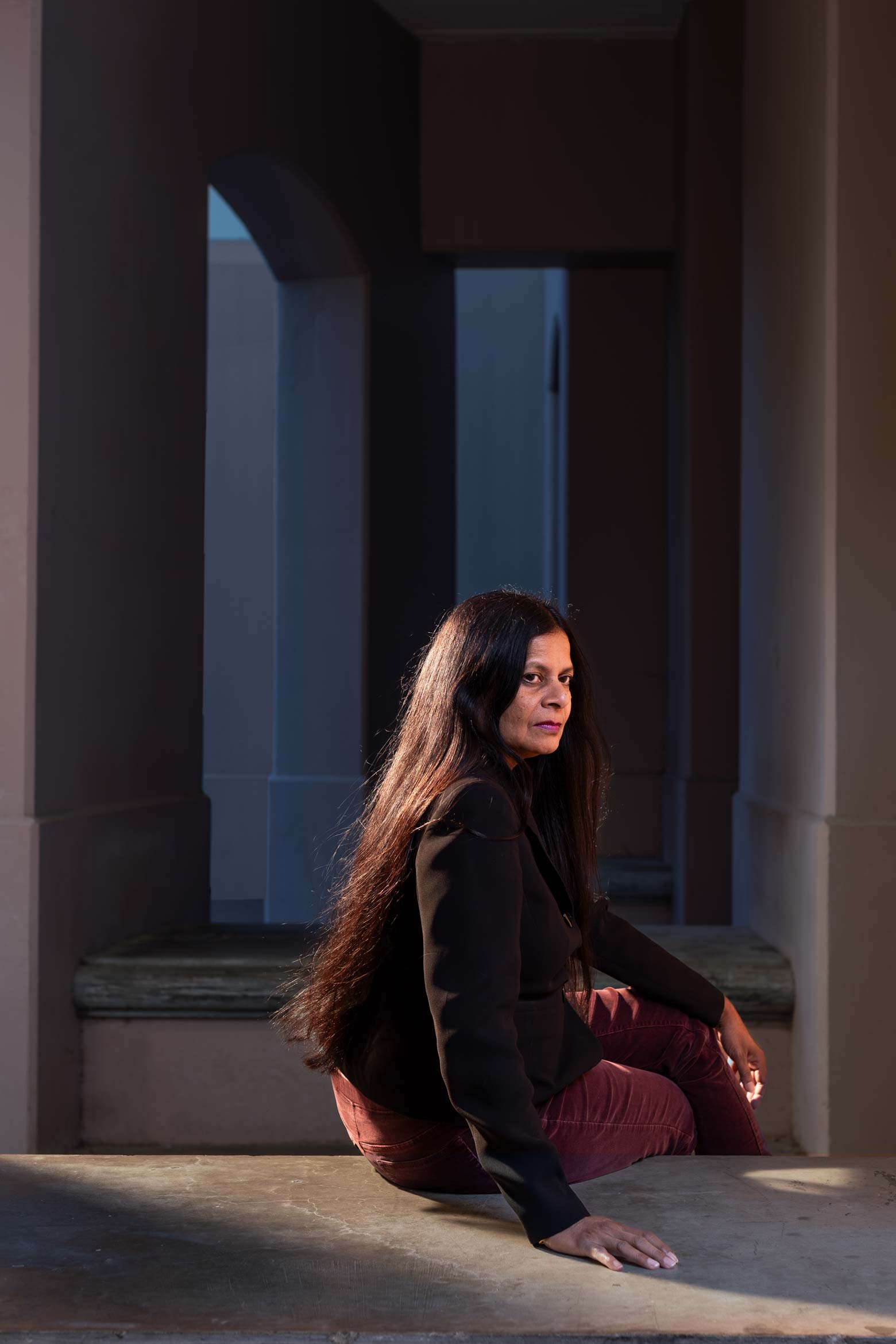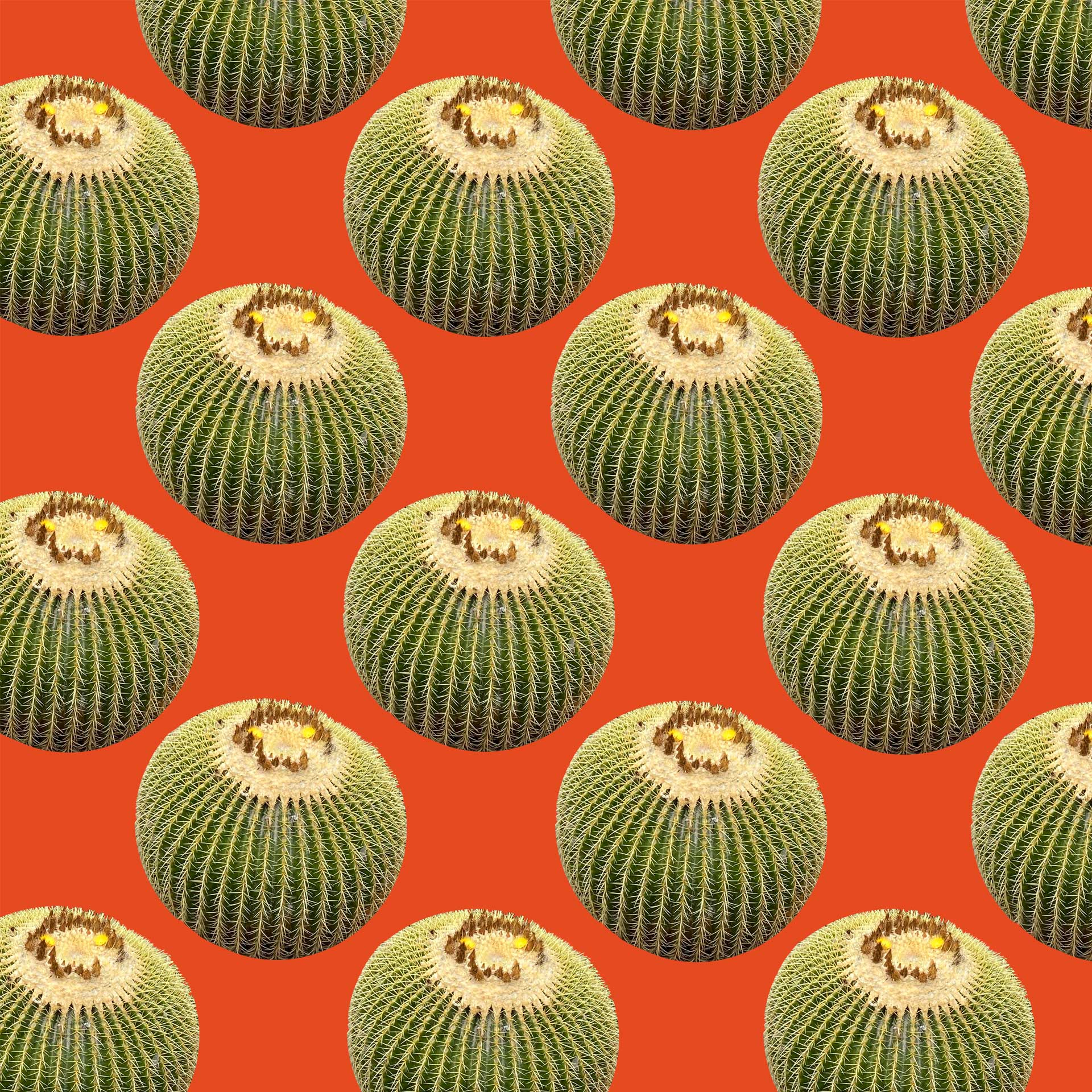In the humanities, as in life, our perspective shapes what we see. Often, the most transformative discoveries come not from grand vistas but from subtle shifts in viewpoint that reveal something surprising. Discovery is about more than just what we observe; it’s about how much we observe. The stories that shape us aren’t always where we expect — sometimes they’re revealed in data archives, blueprints or family histories. By looking at their findings from a different angle, UC Santa Barbara humanities researchers have uncovered new layers of history that would otherwise have remained unseen. Art historian Swati Chattopadhyay reimagines India’s colonial past by studying small, often ignored spaces that sustained the British Empire. Digital artist Laila Shereen Sakr explores how Arabic data culture impacts identity, while artist Hương Ngô uses art to honor her family’s refugee journey. Together, their work reveals the overlooked narratives that challenge how we think about history and culture.
Vantage point

Laila Shereen Sakr
Visualizing Arabic technoculture
From blood, water and wax to pastel, oil and polymers, artists make work from the materials of their time. For digital artist Sakr, that means using data like clay.
An associate professor of media theory and practice, Sakr — who is originally from Egypt — created an archive of the internet in 72 Arabic languages, which she launched in 2009 as “R-Shief.” There, she found her clay.
“Creative ways of responding are the only way to make a real difference,” says Sakr, whose recent book, “Arabic Glitch: Technoculture, Data Bodies, and Archives” (Stanford University, 2023), explores how a region under transformation became a vanguard for new thinking about digital systems.
Like Sakr herself, the book has two voices: “Sakr The Scholar” and VJ Um Amel, Sakr’s Arabic-speaking video jockey cyborg. Using R-Shief’s archive of data from Arabic-language social media, Sakr looks at how the logic of programming technology has influenced how social movements take shape.
The story her data tells goes beyond digital activism. As Sakr puts it, there is no longer any difference between the embodied real world and the online virtual world. Coining the term “data body” for an individual’s data records, she explores how both “bodies” and “data” are “physically, socially and energetically actual.” From high school GPAs to driving, medical and financial records, a large part of our identities are recorded and shared.
“Data bodies have more impact on your life than your real life and your real body,” Sakr says. “There’s no difference between what happens online and what happens in our real lives. It’s one in the same.”
Sakr uses the example of “the glitch” to show how “procedural literacy” for technology can foster political and social change. It’s like “a digital banana peel”; the system slips and does something else. “Sometimes that something else can be a beautiful unpredictable outcome."

Hương Ngô
Creating reflections of Southeast Asian refugees
Artist Ngô sought to learn about her parents’ labor as assembly-line workers in U.S. electronics factories. Her parents, along with many other Southeast Asian refugees, created capacitors, resistors and motherboards, hidden components that modulate tempo, pitch and memory in electronics.
Her latest exhibition, “Hương Ngô: Core Memory” (Sept. 27 to Jan. 26, 2025), presented by Museum of Contemporary Art Santa Barbara and The Riviera Beach House, explores the time her family spent living in Hong Kong refugee camps, and as new immigrants to the U.S.
“They are images of the weather and waves of the day,” says Ngô, a lecturer of art, who created cyanotypes to reflect the refugee body. Cyanotypes, made from sun and water, are stand-ins for the refugee experience, she says, “battered by the elements and an artifact of their resilience.”
Her parents worked night shifts, overtime and holidays as assembly-line laborers. “As a child, I had no idea what they were even making until we visited their factories one day and they passed around their products: tiny, colorful electronic components with metal wires on both sides,” she writes in the recent exhibition “Hương Ngô: This Space Is for Lost Time” at Tiger Strikes Asteroid Chicago. Using similar vintage components, she created sculptures with circuits that gesture toward her parents’ creativity — skills, she says, that were not reflected by their wage labor.
Sometimes Ngô’s dad brought home sculptures fashioned from wire, or her mom “drew a connection between the fineness of embroidery and the tiny objects at work.” But they also brought home books. “To keep their jobs, they had to study whenever their production changed,” Ngô says. “As technology developed, the volumes got bigger and bigger, their testing more frequent. The lines between skilled and unskilled labor blurred for me as their expertise grew. My dad’s workshop slowly filled with tools and curious objects.”

Swati Chattopadhyay
Recasting India’s architecture of empire
Ask any undergraduate or high school student and they will tell you empires are big and vast territorial entities. But that’s overlooking a lot of what makes up an empire, and how an empire’s bigness is construed.
That’s according to Chattopadhyay, a professor of architecture and urban history. Her latest book, “Small Spaces: Recasting the Architecture of Empire” (Bloomsbury, 2023), takes a granular approach to the architecture of the British Empire in India, paying close attention to what has been overlooked in histories of colonialism and empire. She examines spaces that have been deemed insignificant because of their small size, their marginal location or the minor role they seemingly played in the larger social and political scene.
But these were also spaces that made the British Empire in India possible.
“What fascinated me is that most of the spaces — and that could be storage spaces, kitchens, verandahs, servants’ quarters — never really figured in narratives of empire, even though they were essential to its everyday functioning,” says Chattopadhyay, who for years jotted down her notes in the margins of her research into the British Empire’s big problems, key players and major colonial cities like Calcutta and New Delhi.
“To work around this scalar and dimensional prejudice of empire, you have to shift vantage,” she says. To do so, she tells stories of marginalized people — servants, women, children, subalterns and racialized minorities — who held up the infrastructure of the empire.
Exploring an array of overlooked places and spaces, from cook rooms and slave quarters to outhouses, medicine cupboards, rooftop terraces and bookshelves, she reveals how and why these kinds of minor spaces are so important to understanding colonialism, and how these “adjunct” spaces contributed to long-distance trade and became related to foodways and famine, among other things. In doing so, “Small Spaces” is an invitation to shift our attention from the large to the small scale.


